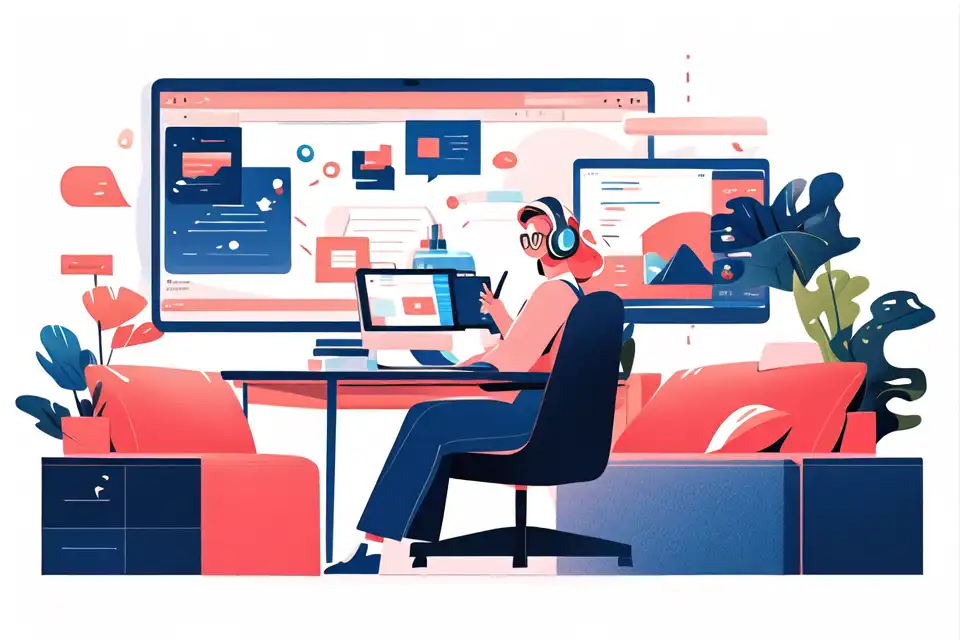6 Fields of Distraction
Explore what 6 fields of distraction means for your meetings. Learn more about its definitions, best practices, and real-world examples to enhance your meeting effectiveness. Dive into the importance, challenges, and solutions for each term.
Try Lark for Free
Meetings are an integral part of professional life, serving as platforms for collaboration, decision-making, and information dissemination. They are also prime opportunities for distractions, which can hinder productivity and contribute to ineffective communication and decision-making. The 6 fields of distraction provide a framework for understanding and addressing these impediments, thereby fostering more meaningful and impactful meetings.
Get Lark for meeting minutes today.
Definition of 6 fields of distraction
The 6 fields of distraction encompass a comprehensive framework that categorizes the various sources of interruptions and disturbances encountered during meetings. These fields include both internal and external distractions, such as technological disruptions, environmental influences, cognitive barriers, and interpersonal dynamics. This holistic approach allows individuals and organizations to identify and manage distractions effectively.
Importance of 6 fields of distraction in meetings
The significance of the 6 fields of distraction in the context of meetings cannot be overstated. By recognizing and addressing these distractions, meeting participants can elevate the quality and outcomes of their interactions. Whether in person or virtual, being cognizant of these distraction fields enables individuals to foster an environment conducive to productivity, engagement, and collaboration.
Learn more about Lark Minutes
Examples of 6 fields of distraction in real-world meeting scenarios
Examples 1: technological distractions
Examples 1: technological distractions
-
In a virtual meeting, technical glitches in video conferencing platforms can disrupt the flow of communication and cause participants to lose focus.
-
Mobile devices and laptops, while essential for remote meetings, can also become sources of distraction if not used judiciously.
Examples 2: environmental influences
Examples 2: environmental influences
-
Poor lighting or uncomfortable seating arrangements in a meeting room can detract from participants' attention and overall comfort.
-
Ambient noise from adjacent spaces can impede effective communication and concentration.
Examples 3: cognitive barriers
Examples 3: cognitive barriers
-
Multitasking or preoccupation with personal tasks can lead to cognitive overload, diminishing an individual's ability to actively participate in the meeting.
-
Mental fatigue or stress can inhibit clear thinking and impede the processing of new information.
Examples 4: interpersonal dynamics
Examples 4: interpersonal dynamics
-
Conflicting opinions and interpersonal tensions among participants can create a disruptive atmosphere, hindering productive discourse.
-
Dominant personalities or excessive interruptions can hinder equitable participation and diminish the meeting's effectiveness.
Examples 5: emotional interference
Examples 5: emotional interference
-
Emotional distress or personal concerns can divert individuals' attention, affecting their ability to engage constructively within the meeting.
-
High-stress environments or unresolved conflicts can lead to emotional upheaval that disrupts the flow of the meeting.
Real-world scenarios illustrate the practical implications of each type of distraction and highlight the potential impact on meeting effectiveness.
Best practices of 6 fields of distraction
To effectively manage the 6 fields of distraction in meetings, several best practices can be implemented:
- Establish Clear Meeting Objectives: Clearly define the purpose and expected outcomes of the meeting, guiding participants' focus and engagement.
- Optimize Technological Resources: Prioritize reliable and user-friendly technological tools to minimize disruptions and ensure seamless communication.
- Manage Environmental Factors: Choose meeting spaces that are conducive to attentive participation, free from excessive noise and other distractions.
- Promote Active Listening and Engagement: Encourage active participation and establish ground rules to minimize interruptions and maintain focus.
- Address Interpersonal Dynamics: Foster an inclusive and respectful environment that fosters constructive dialogue and minimizes disruptive behavior.
- Acknowledge and Address Emotional Challenges: Offer support and understanding to individuals experiencing emotional distress, ensuring their comfort and participation.
Implementing these best practices enhances an organization's ability to navigate and mitigate distractions, ultimately elevating the quality of meetings and enhancing overall productivity.
Learn more about Lark Minutes
Challenges and solutions
Navigating the 6 fields of distraction in meeting settings presents several challenges, which can be addressed through practical solutions:
-
Challenge: Technological Malfunctions
- Solution: Conduct pre-meeting technology checks to identify and resolve potential issues before the meeting commences.
-
Challenge: Environmental Disturbances
- Solution: Choose meeting venues equipped with adequate soundproofing and lighting and minimize disruptions from external sources.
-
Challenge: Cognitive Overload
- Solution: Employ techniques such as strategic breaks and concise, structured agendas to prevent cognitive exhaustion among participants.
-
Challenge: Interpersonal Conflicts
- Solution: Facilitate open discussions, establish communication norms, and address conflicts in a respectful and constructive manner.
-
Challenge: Emotional Instability
- Solution: Create a supportive and empathetic environment that encourages individuals to address emotional concerns openly and seek necessary support.
Acknowledging and proactively addressing these challenges equips meeting organizers and participants with the tools to effectively manage distractions and ensure the optimal outcomes of meetings.
Conclusion
In conclusion, the impact of the 6 fields of distraction on meetings is undeniable. By recognizing and addressing these distractions, individuals and organizations can foster an environment conducive to meaningful dialogues, impactful decisions, and productive collaborations. Leveraging the understanding of the 6 fields of distraction empowers professionals to enhance meeting experiences and maximize their overall impact.
Get Lark for meeting minutes today.
